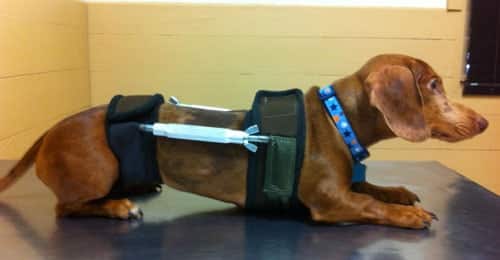Lumbosacral Syndrome in Dogs
Overview
Also referred to as Lumbosacral Syndrome and Cauda Equina Syndrome, describes compression of the nerve roots in the lower part of the spine. There are multiple abnormalities that can lead to this syndrome including vertebral canal narrowing, subluxation, osteophytes (“bone spurs”), epidural fibrosis, osteochondrosis, intervertebral disc disease, and soft tissue proliferation.
Symptoms
This syndrome is most commonly seen in large-breed, older dogs. Dogs with lumbosacral disease may feel pain from mild to severe in the lower back and not want to jump or climb stairs. They may show difficulty sitting or rising, and even present with hind limb lameness. Patients may also have poor urinary and bowel control (incontinence). Finally some have poor tail carriage and /or inability to wag their tails. Lumbosacral disease is often confused with arthritis of the hip as the signs may appear similar.
Treatment
Based upon the severity at presentation your neurologist may initially treat medically. Either a steroid or a non-steroid anti-inflammatory medication may be prescribed in order to decrease the swelling of the nerve roots. If after rest and anti-inflammatory medication your dog remains painful or appears to be deteriorating, surgery may be necessary.
Other Spine Issues in Dogs
Here is a list of common disc diseases in dog that you should be aware of.
- Curvature of the Spine
- Degenerative Myelopathy
- Degenerative Spinal Stenosis
- Discospondylitis
- Hemivertebrae
- Hypoplasia of Dens
- Intervertebral Disc Disease
- Spondylosis Deformas
- Wobbler Syndrome
Related Content





















